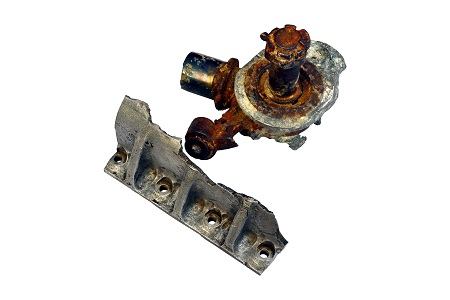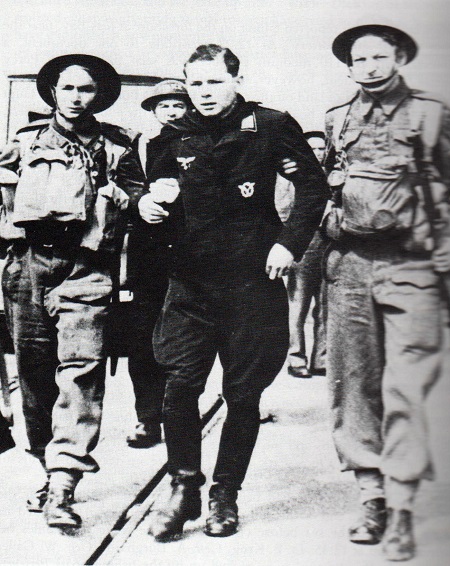Dornier 17 Z-3
Nationality: German
Serial number: 4251
Unit: 6 / KG3
Call sign: 5K + LP
Date of loss: 28/08/1940
While en route to bomb Hornchurch aerodrome in Essex, this aircraft was attacked by a Spitfire flown by Squadron Leader Leathart of No. 54 squadron. Hit in both engines, the aircraft jettisoned its bombs and ditched in the sea just off Foreness Point, Cliftonville, at 12.45pm.
Nationality: German
Serial number: 4251
Unit: 6 / KG3
Call sign: 5K + LP
Date of loss: 28/08/1940
While en route to bomb Hornchurch aerodrome in Essex, this aircraft was attacked by a Spitfire flown by Squadron Leader Leathart of No. 54 squadron. Hit in both engines, the aircraft jettisoned its bombs and ditched in the sea just off Foreness Point, Cliftonville, at 12.45pm.
 The relics displayed consist of part of an oil tank from one of the Bramo 323-P radial engines and part of the airframe structure.
The relics displayed consist of part of an oil tank from one of the Bramo 323-P radial engines and part of the airframe structure.Crew: Pilot – Leutnant Peter Krug, Observer – Gefr. Artur Burhhardt, Radio Operator – Gefr. Willi Gailer, Flight Engineer – Flgr. Anton Bruchmann; all captured wounded.

The photograph shows the pilot, Leutnant Peter Krug, being "escorted" along Margate Pier, after he and his crew had been brought ashore by the Margate Lifeboat. This was not to be Peter Krug's last brush with the Allied authorities. On April 16, 1942, he broke out of a Canadian POW camp at Bowmanville, Ontario. After stealing a boat near Windsor and paddling to Belle Island in the Detroit River, Krug fled rapidly through Detroit, Chicago, and Dallas en route to Mexico. He was arrested in San Antonio on May 1st when a hotel clerk became suspicious and called the F.B.I. and within days, Krug was back in his Canadian POW camp.
Back
